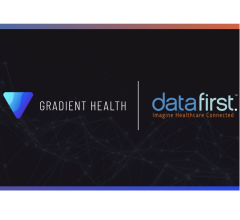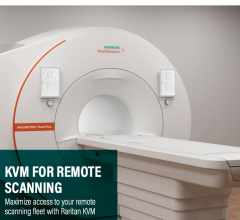As healthcare systems continue to expand through consolidation and the amount of data generated by patients grows exponentially, so does the need to access that data from any location. Remote viewing systems are not a new concept in this landscape, as many picture archiving and communication systems (PACS) have built-in viewers or are accompanied by vendor neutral archives (VNA). But many of these solutions are still tied to the physical premises, limiting their utility outside the walls of the hospital — or even the department.
The advent of cloud computing technology has opened up new possibilities for remote image storage and viewing.
Greater Image Storage Capacity
One of the primary advantages of a cloud-based system is that the cloud greatly increases storage capacity. At the 2018 Healthcare Information and Management Systems Society (HIMSS) conference in March, Carestream celebrated that it now manages 26 million images through its Vue Cloud platform across 12 data centers worldwide. The company said its goal is to create a “cloud community” for medical image sharing. To date, Carestream said its larger customers have shown the greatest interest in storing and viewing images on the cloud. From the company’s perspective, cloud solutions are ideally suited for facilities of any size, as they offer predictable fees without a large initial capital investment or regular upgrades.
Sectra introduced the cloud as a feature of its PACS in 2015. Images are uploaded directly to the cloud from all modalities, and access is granted at any workstation through the web. The remote viewing cloud is hosted on a per-exam fee, and the viewer can be integrated to multiple VNAs or DICOM archives at the same time.
Streaming from the Cloud
The increased storage capacity of the cloud can be a boon for organizations with large datasets, but this advantage is negated if providers cannot quickly access the images they are looking for. One answer is to stream the files from the cloud to whatever device is being used to view the images. RamSoft’s PowerServer radiology information system (RIS)/PACS does this through its Remote Rendering feature, which it says dramatically reduces bandwidth while increasing image display speed. RapidResults, the zero-footprint clinical image and report viewer inside PowerServer, allows users to stream the images to any device, including smartphones, tablets and desktops.
Artificial Intelligence in the Cloud
Over the last few years, numerous efforts have explored potential applications for artificial intelligence (AI) in radiology. When used in a post-processing or viewing application, AI can help extract additional layers of data from the image not previously available to radiologists.
Texas-based AI Visualize integrated artificial intelligence with its new cloud-based image analysis and visualization platform, introduced at the 2017 Radiological Society of North America (RSNA) annual meeting last November. AI algorithms read the images to delineate diagnostically valuable information and delivers detailed 2-D/3-D renderings to any internet-enabled viewing device in real time. Fast image transmission is achieved through a process called predictive buffering, which eliminates internet bandwidth and latency limitations.
At HIMSS in March, Ambra Health announced a new partnership with Google Cloud. As a Google Cloud Technology Partner, Ambra will be able to offer its suite of imaging solutions through Google Cloud. In addition to streamlined image management for its customers, operating through Google Cloud will give providers access to larger data sets for more comprehensive analyses, and serve as a training tool for artificial intelligence (AI) and machine learning algorithms.
Interoperability in the Cloud
By operating an image viewer and/or archive in the cloud, multiple parties are able to view the images simultaneously at various locations, greatly improving care coordination capabilities.
One application where this may prove true is in breast imaging. Prior mammograms are essential to detect any change in the breast from year to year. However, 25 percent of screening patients and 60 percent of diagnostic patients do not have prior mammograms available at the time of their examination, according to Kathryn Pearson Peyton, M.D., breast imaging radiologist and founder of Mammosphere.1 Peyton believes one of the biggest reasons for this deficiency is a lack of interoperability between disparate information systems. “The good news is that a cloud-based model promises to enhance interoperability for patients entering the hospital or imaging center systems,” she said. “Using image sharing, medical records staff may easily procure needed prior comparisons as well as offer patients access to web-based applications for engagement in controlling their own imaging needs.”
Expanding the Cloud
While many cloud-based image storage and viewing systems are managed by the vendor, NucleusHealth recently introduced commercial licensing for its cloud platform-as-a-service (PaaS) that allows third parties to deliver medical images through their own tools and specialty workflows. This model, backed by Microsoft Azure, allows every person or department that needs to view images — from radiologists to surgeons to medical device manufacturers — to access them through their own applications or workflows, streamlining the process. Nucleus PaaS also allows users to build their own custom web-based imaging applications.
Reference
1. Peyton, K.P. “How Interoperability Improves Mammography Outcomes,” www.itnonline.com. Jan. 2, 2018.


 December 01, 2025
December 01, 2025 








